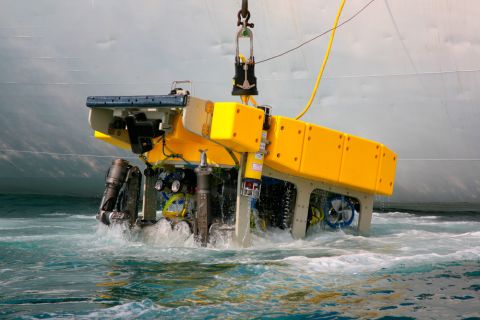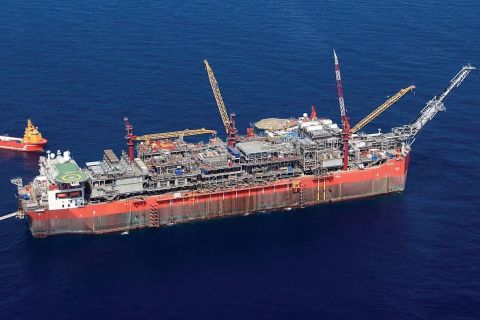Mission Advisors LP has a unique assignment nowadays. Many newer clients of the San Antonio-based, midstream-focused investment firm are South Texas royalty owners who recently made money—sometimes a lot of money—in oil and gas, thanks to the Eagle Ford.
They want, in turn, to put their money back into oil and gas. It’s a reminder that some of the industry’s biggest investment fans are those who know it well.
“We think MLPs are well suited to most investors, but we do have a number of new clients who used to be ranchers only. Now they’re getting oil and gas royalty checks as well, some of them fairly large,” Dana McGinnis, Mission’s CEO and principal portfolio manager, told Midstream Business. McGinnis and COO Steve Henderlite head the investment firm.
“After you buy a vacation house and take some trips and still have money, you have to start investing,” McGinnis added. “There are people like that in Texas and other shale areas around the country, and we are fortunate to have a few of them. They understand the oil and gas business and see the growth. Master limited partnerships are a natural fit for the portfolios of people like this; we wish we had more of them. In fact, MLPs are a good fit for almost any kind of investor. We just think the MLP midstream is a fantastic investment for all kinds of reasons.”
Profiting from shale
Mission Advisors’ business is managing individual and institutional accounts focused on making monetary gain from the energy revolution taking place in America, due to the broad expanse of the new shale plays and the enhanced drilling and extraction methods employed to lift the crude oil and natural gas to the surface. Mission Advisors was started in 2003 but began to concentrate on MLPs and the domestic energy sector in 2009 when it became clear (at least to them) that the U.S. shale revolution would change the energy world.
McGinnis began his career in the 1970s with Rotan Mosle Inc., which at the time was a premier regional oil and gas investment bank headquartered in Houston. Time spent at Rotan Mosle created a sound foundation for energy investing that has served him well throughout his career, he said. COO Henderlite has managed several funds since beginning his career in the early 1990s with Weyerhaeuser’s pension fund group.
As any MLP investor knows, partnership investing can get complicated—so complicated that the income potential starts to pale in light of the challenging tax paperwork. The firm’s managers feel they should do what they do best and leave tax consultation to the specialized CPAs.
“MLPs can get complicated, from a tax point of view,” McGinnis said of MLP investing. “Because they are partnerships, all revenue, expenses and deductions flow through to the limited partners and must be reported on tax returns. But those same deductions allow much of the income paid to investors to be tax deferred until sometime in the future.”
The result may be that there is “very little tax on a current basis on these distributions, and it can be possible to effectively compound returns by holding the assets for a long time,” McGinnis said. “It is more attractive, I think, than many people realize.”
Focus on fundamentals
The firm’s research focuses on fundamentals. It divides its favored MLP energy universe into identifiable areas.
“We analyze all segments of the MLP sector searching for the best business models to meet the needs of the long-term investor,” McGinnis says. That includes eight or more identifiable business segments, including drilling, gathering and processing, transportation and shipping.
“Each one of those segments has its own characteristics and, for our purposes, some are better than others” at any given time, he said.
“As an example, the refining business has traditionally carried commodity risk as well as cyclical and seasonal demand risk,” he added. “That has a higher risk profile than something like a pipeline that has a 20-year contract to transport a fixed amount of product for a fixed fee.
“So the pipeline returns might be lower but so is the risk, and one can have confidence that earnings and distributions will flow through to investors. However, the lowest-risk model is not always the one with the biggest returns. And it is interesting to note that as the industry begins to use MLPs as a tool to increase efficiency in the energy field, refiners are spinning off supply pipelines in an effort to enhance returns and reduce cyclicality. All investing is a moving target. We can and do look at a cyclical companies that have commodity risk—we don’t avoid them—but we might only buy them at a certain period in the cycle,” he added.
“We assess each one of those business models and decide which we think has the highest probability of producing the highest, risk-adjusted return for our investors,” McGinnis said. “What we prefer are very long-term contracts with high-grade sponsors who promise not only to pay, but to pay more every year.
“We like to use the theoretical example of a 20-year contract with XTO, a subsidiary of ExxonMobil, which has yearly escalations in payments on existing contracts and promises to add new contracts as well. When we find that, we feel pretty confident that we’re going to get paid and have a good chance to grow as well. And I think the market would generally agree with us,” he said.
No guarantees
Long-term contracts are not all alike, he warned, and a long-term commitment is not a long-term guarantee unless it so states. The recent announcement by Boardwalk Pipeline Partners LP that it was cutting its distribution is a case in point. Some of Boardwalk’s contracts were dedicated volume commitments but not minimum volume guarantees, better known as take-or-pay contracts. “When expected volumes did not appear, Boardwalk had no choice but to cut the distribution. We try hard to avoid this scenario,” he said.
“And that’s a risk, at some level, in all of these MLPs,” he added. “That’s why you have to, as an investor or investment adviser, understand to the best of your ability what those risks are in the contractual obligations.
“MLPs as an asset class have done very well over the past 10 years if one is to judge by the average return of the Alerian MLP Index, which has returns something more than 15% a year according to industry sources,” McGinnis said. “Part of that return is tax deferred, and that is why they are widely held by individuals. But MLPs are increasingly held by institutions as well, and we believe that more institutions will invest in the future seeking these demonstrated excellent returns.
“Our approach is to attempt to outperform the Alerian Index for our clients by studying all business models in the MLP space and choosing only those MLPs that we think are in position to increase distributions to investors at the highest rates,” he added.
Future growth?
A lot of investors are asking about the future of MLP growth since they have performed so well, as well as the risks posed by rising interest rates, McGinnis said. In spite of past returns and the potential for somewhat higher interest rates, he sees a bright future for midstream MLP investing. At the current pace of drilling and volume increases, most industry experts believe it will take more than $20 billion a year to build the infrastructure in the U.S. that will be needed to carry new volumes to market. At that pace, many expect the build-out to last for 20 to 30 years. A lot of those billions will be invested using the MLP structure because it is so efficient. Current and future investors should have plenty of opportunities, he said.
“You have to ask what happens when interest rates go up, because they will,” he added. “We try to point out to our clients that a fixed-income investment, like a treasury bond, has a fixed coupon that will not increase as rates rise.
“But MLPs, at least most of them, have increased their distributions every year as the partnerships grow. So an increase in your yield every year is a pretty good defense, we think, in a rising interest rate environment.”
Recommended Reading
Aker BP’s Hanz Subsea Tieback Goes Onstream
2024-04-22 - AKER BP’s project marks the first time subsea production systems have been reused on the Norwegian Continental Shelf.
SLB, OneSubsea, Subsea 7 Sign Collaboration Deal with Equinor
2024-05-02 - Work is expected to begin immediately on Equinor’s Wisting and Bay Du Nord projects.
Remotely Controlled Well Completion Carried Out at SNEPCo’s Bonga Field
2024-02-27 - Optime Subsea, which supplied the operation’s remotely operated controls system, says its technology reduces equipment from transportation lists and reduces operation time.
E&P Highlights: March 15, 2024
2024-03-15 - Here’s a roundup of the latest E&P headlines, including a new discovery and offshore contract awards.
E&P Highlights: March 25, 2024
2024-03-25 - Here’s a roundup of the latest E&P headlines, including a FEED planned for Venus and new contract awards.





